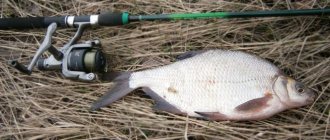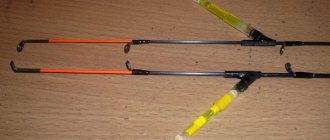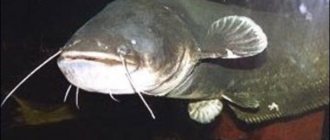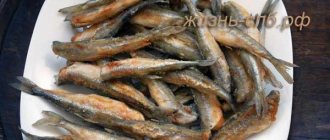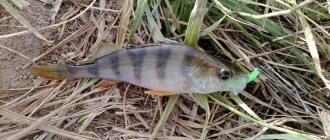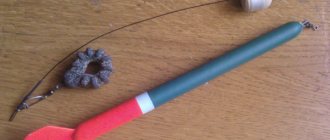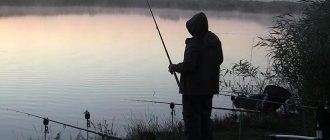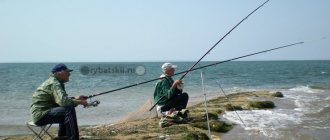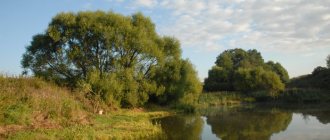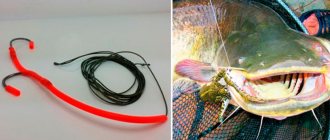Irina Orlova | September 14, 2021
The salmon spawning river Onega begins its journey from Lake Lacha and, crossing the northwestern part of the Arkhangelsk region, flows into the Onega Bay of the White Sea. The length of the river is about 416 km. The Onega drainage basin is spread over hilly plains with forests and swamps, so the nature of its flow is calm, but there are also noisy rapids that are not covered with ice even in the fierce winter.
Our bream
Onega is home to both marine and freshwater fish. And, of course, bream, we have it in a residential form here. You can catch it on the river both with a donk and a float rod. But in order to proudly return home with your catch, you need to know the features of the topography and the state of the bottom of the reservoir, as well as the habits of this cautious fish.
By the way, I note that two decades ago, during the period of the dominance of moth-alloyed wood, bream on Onega had a much better food supply than now - it almost always stayed close to the accumulations of logs near the pans, eating the larvae of bark beetles and other insects, falling into the water. Therefore, it was possible to catch it there on a donk in abundance and without bait.
Bream feeds on aquatic plants, algae, zoobenthos, worms, various larvae and insects. Sexual maturity occurs in the fifth or sixth year of life with a body length of 30 cm. Bream spawn here, as a rule, in late May - early June at water temperatures in the range of 12 - 18°C. During spawning, it splashes, jumping out of the water and raising a bunch of splashes. It lays eggs on last year's vegetation. The fertility of one female is 100–150 thousand eggs. The incubation period lasts no more than a week. We have such a folk sign: if the bird cherry blossoms, it means that the bream has gone to spawn.
This fat fish is constantly busy searching for food: in the fall it eats to capacity to go to the wintering pits, where the kemarit, so to speak, does not eat at all, and in the spring it comes out of hibernation - and is saturated before spawning. The period of active feeding for this peaceful fish occurs in the summer, when various insects fly through the air and plant seeds fly. Moreover, at the beginning of summer it stays in holes with a muddy bottom, swarming in the mud and looking for food there, and by mid-summer the water in the river becomes warm - and the bream goes to places with a sandy and rocky bottom to get rid of the parasites that overcome it.
He itches on the uneven bottom and jumps out of the water, thereby getting rid of water fleas and other parasitic companions that have attached themselves to his body (photo 1) . And if at this moment a flock of bream is caught by a thunderstorm, then this flock stops cleaning itself and goes to the pit. By the end of summer, it returns to its usual habitats, where it continues to gain fat for winter hibernation.
Our donka
I’ll tell you what a simple donka is (photo 2) , with which we have been catching bream for a long time: a main leash about a meter long, which can be a fishing line, “braid” or even a thin household cord, is tied to one end with a carabiner, and a bottom sinker - from the other. Fishing hooks (the maximum number of single hooks on one fishing gear should be no more than four) on 25-centimeter side leashes are attached to the main leash.
I personally put two hooks - this way the equipment gets tangled less when casting, and it can also be untangled faster if the fish that bit has twisted everything around. And putting bait on two hooks takes very little precious time. The distance between the tied hooks should be such that, on a vertically hanging rig, the upper hook is several centimeters higher than the lower hook fastening, and the lower hook should not touch the sinker. This entire structure is fastened through a carabiner to a carabiner at the end of the main fishing line (cord) wound on a spinning reel.
But if the place where the tackle is thrown is rich in snags, driftwood, stones and various anthropogenic debris (cables, pieces of rusty metal, etc.), then the probability of the donkey getting caught, breaking and leaving at the bottom of the reservoir is very high, so the carbine is only installed onto the main fishing line of the spinning rod, and a loop is made at the free end of the equipment.
Fishing on Lake Dolgoye
Around the end of April, whole schools of fish gather in shallow water, and you can catch them right from the shore.
There is:
Bream;
Ide;
Perch;
Roach.
It is best to choose a rod with a reel. It is better not to go into shallow water on your own, as the places are swampy. It is recommended to fish in calm weather; cliffs and snags happen very often at this time.
Fishing spots on the map. Add a place
Our sinker
The section of the river where my husband and I usually catch bream has a fast current, with creeks and pools, so we use a flat and heavy sinker so that the tackle with bait does not get carried away by the current. Now you’ll find out how to make such a sinker yourself in makeshift conditions.
First, let's prepare the materials and tools (photo 3) for making a spoon-type bottom sinker: protective gloves for work; lead from which the load will be cast; a container for melting lead (anything can serve it, even an ordinary tin can); dessert spoon; a bucket of cold water; drill with drills 2 - 3 mm and 8 - 10 mm; awl and file.
We place lead in a container for melting (I take a stainless steel ladle) and melt it over an open fire (it is known that the melting point of lead is 327.5 °C). For melting, we use a barbecue grill, assembled from building bricks (photo 4) , and the required increase in temperature is achieved by adding firewood to it. Sometimes my husband takes a blowtorch for melting, but it is unsafe to work with it on a hot summer day; it can explode. You can also take a gas burner.
As soon as the lead has completely melted, remove the container from the fireplace and carefully and slowly pour the molten metal into a spoon (photo 5) . We always wear protective gloves to avoid getting burns. After pouring the molten metal into the spoon, wait about a minute until the lead begins to solidify and take shape (photo 6) .
Then we place the hardening lead cast in water on a spoon (photo 7) . The water begins to bubble from the hot metal, and the lead casting finally cools and becomes solid. We drop the resulting sinker to the bottom of the bucket and begin making the next one, following the procedure described above. The process of melting lead and creating five to six sinkers takes my husband and I no more than an hour. But that is not all.
The next important step is drilling holes for mounting the equipment. First, we do this with a drill with a small diameter: we place the future bottom sinker on a horizontal surface (in other words, on a garden table) and drill a hole, stepping back from the narrow edge of about 4 mm (photo . Then we chamfer each hole with a drill of a larger diameter (photo 9) so that the line does not rub against sharp edges.
The holes are sometimes not very neat, but we eliminate this drawback with the help of an awl and a file. Carefully clear the holes with an awl from lead filings that have clogged there (photo 10) . The final touch is to smooth out the edges near each hole with a file or needle file - carefully grind off all the irregularities and smooth out the scratches with a tool to give the lead crafts a more aesthetic appearance.
The resulting sinkers have proven themselves quite well for catching fish in fast currents, but if there is no alternative, they can also be used in a reservoir with a calm current.
Our secrets. I spoke in detail about the manufacture of the bottom sinker, and now I will begin to reveal my secrets of catching bream using the bottom, for which the sinker was created.
Catching bream on a donk is a very exciting activity that requires endurance and attentiveness, especially when the fish begins to swallow the bait.
The bite of a bream is always recognizable: at first it is uncertain, after a while the tip of the rod actively signals that you need not to yawn and hook. If you know where the fish feed, you can fish from a boat or from the shore.
Fishing from a boat makes it possible to test a larger number of feeding holes and pools with tackle. Usually we go out on a boat to the middle of the river, sometimes we stand close to the shore, drop anchor on a long strong rope and fish the place. In the middle of the river, sometimes up to ten or more meters of rope are required for an anchor, such is the depth there. In windy weather, it is better to use two anchors (one at the bow, the other at the stern) to prevent the boat from being tossed around by the wind.
The advantage of fishing from the shore is the ability to silently approach the desired place without scaring away the fish. We always try - both in the boat and when fishing from the shore - to take a net with us (photo 11) , it allows you to definitely remove the fish caught from the water, preventing it from breaking the leash or otherwise getting off. And since bream is a schooling fish, the bite stops for a long time after escaping from the fishing hook, the fugitive tells his comrades or something. It is always more convenient to fish with a donk together if the fish is actively biting: one of us catches the prey and brings it to the shore or boat, and the second one pulls it out of the water with a net.
But even when the bream leaves the hook, I mentally wish the lucky one: “Grow big and never get caught by me again.”
And when there is no landing net, this also happens: a large specimen must be exhausted in the water, and not immediately fished out and pulled ashore or into a boat. We let the fish wander on the hook in the water column, keeping the cord constantly taut so that there is no slack and it does not sag, then we bring the large fish to the place where it is convenient to grab it with your hand and quickly pull it out.
We use different baits - we tried earthworms, maggots with bloodworms, steamed pearl barley and peas, rolled oats, dough, semolina, seasoned with flavorings. But more often we take rye bread, make it into a homogeneous mass, adding a flavoring agent, the smell of which makes my mouth water, let alone fish. The advantage of bread is that bait can be made from it on a pond in ten minutes. I will note, however, that a real sandwich - a ball of flavored rye bread and a worm added to it (photo 12) - bream bites much better.
To keep the fish alive and fresh, preventing it from spoiling during a foray into a pond, we do not put it in any plastic bags, but place it in a fish tank (a metal mesh basket) and then into the water, tying it over the side of the boat.
In order for the bream to stay in a strictly defined place until the inevitable emigration for the winter, it must be fed all summer. The methods are different: you can throw food manually at this very specific place, you can install the feeder on the water, securing it with a weight, and as it is depleted, you can supplement it with contents. For bait we use breadcrumbs (corn or wheat) and hemp or sunflower cake. The solid components of the bait must be crushed so that the fish does not overeat.
We also introduce fertilizer to lure bream during fishing by tying the feeder over the side of the boat. But other species of fish that are food competitors of bream may also be interested in bait - ide, ruff, but also perch, roach and chub. If this happens, you should not sadly leave the fishing spot, but should wait for the approach of larger individuals of the species. And in order to get rid of bites from smaller breams (“lapwings,” as we call them) or the same ruffs, you should increase the volume of the bait.
We lawfully release bream less than 25 cm in length, if measured fresh from the top of the snout (with the mouth closed) to the base of the middle rays of the caudal fin, back into their natural habitat. The daily catch rate for recreational fishing in inland waters of the Arkhangelsk region is 10 kg per person.
Fish biting forecast on the Onega River
| Weather forecast and fish bite | Calendar, from 01-07-2021 to 04-07-2021 | ||||||||||||
| Thu | PT | SB | VS | ||||||||||
| Times of Day | Day | Evening | Night | Morning | Day | Evening | Night | Morning | Day | Evening | Night | Morning | |
| Cloudiness, precipitation | Partly cloudy | Partly cloudy | Partly cloudy | Mainly cloudy | Mainly cloudy | Partly cloudy | Clear | Clear | Partly cloudy | Clear | Clear | Clear | |
| Temperature °C | 12 | 16 | 12 | 7 | 16 | 21 | 15 | 10 | 15 | 18 | 11 | 5 | |
| Pressure, mm. | 762 | 762 | 762 | 763 | 762 | 760 | 759 | 761 | 762 | 763 | 765 | 768 | |
| Direction, | North wind | Wind northeast | North wind | North wind | North wind | North wind | North wind | North wind | North wind | North wind | North wind | North wind | |
| wind speed | 5 m/s | 4 m/s | 3 m/s | 2 m/s | 2 m/s | 2 m/s | 1 m/s | 2 m/s | 4 m/s | 5 m/s | 4 m/s | 2 m/s | |
| According to the forecast, the fish will bite on: live bait, spinners, wobblers, and silicone baits Pike | 30% | 35% | 0% | 60% | 45% | 35% | 0% | 45% | 30% | 35% | 0% | 45% | |
| According to the forecast, they will bite on: worm, leech, small baitfish, spinners, wobblers, silicone Perch | 50% | 60% | 0% | 60% | 40% | 60% | 0% | 70% | 50% | 60% | 0% | 70% | |
| According to the forecast, they will bite on: maggot, caddis, fly, grasshopper, worm Dace | 60% | 75% | 40% | 55% | 50% | 75% | 40% | 65% | 60% | 75% | 40% | 65% | |
| According to the forecast, they will bite on: maggot, worm Ruff | 55% | 55% | 40% | 55% | 45% | 55% | 40% | 65% | 55% | 55% | 40% | 65% | |
| According to the forecast, the fish will bite on: worm, grasshopper, spinner, wobbler, silicone Trout | 60% | 65% | 35% | 65% | 50% | 65% | 35% | 75% | 60% | 65% | 35% | 75% | |
| According to the forecast, the fish will bite on: worm, mayfly, spinner, artificial fly Grayling | 40% | 55% | 0% | 55% | 30% | 55% | 0% | 65% | 40% | 55% | 0% | 65% | |
| Bait: oparysh, peas, wheat, pearl barley, worm Bream | 40% | 70% | 60% | 60% | 30% | 70% | 60% | 70% | 40% | 70% | 60% | 70% | |
| Bait: no Burbot | 0% | 0% | 0% | 0% | 0% | 0% | 0% | 0% | 0% | 0% | 0% | 0% | |
| Bait: parsley, caddis fly, dough, pearl barley, wheat Roach | 45% | 60% | 0% | 80% | 55% | 60% | 0% | 70% | 45% | 60% | 0% | 70% | |
| Bait: oparysh, mastyrka, worm, corn, pearl barley Bleak | 70% | 75% | 0% | 65% | 55% | 75% | 0% | 80% | 70% | 75% | 0% | 80% | |
| Bait: sponge, leech, worm, spoon, wobbler Ide | 40% | 55% | 40% | 45% | 25% | 55% | 40% | 60% | 40% | 55% | 40% | 60% | |
Our kitchen
Bream is a fatty but bony fish, but in our northern villages near reservoirs, where it has been caught for a long time, they know how to cook it. They even cook fish soup from it, placing the fish in clean gauze during cooking so that the bones from the boiled fish meat do not fall into the broth. It is also smoked, dried and fried. Moreover, in each fishing house the methods of preparing it vary slightly.
Frying bream until golden brown is not difficult; to prepare this dish you will need fresh or salted fish, olive oil, although you can use any other, salt and flour (photo 13) .
We clean the fish, removing its scales, cutting off the head with gills and washing it. Then we make transverse cuts along the entire length of the body of the fish carcass - so that the meat is cut to a depth of about half a centimeter, and the spine remains intact. We make cuts on both sides. The distance between the cuts should be from half a centimeter to one and a half centimeters, and the more often the cuts are made, the better (in photo 14 - after one and a half centimeters, I cut this way to understand the process).
All this is so that during the frying process most of the bones come out, then they do not have to be picked out from the meat. You can also chop the fish into several pieces; it will be easier to turn them over in a frying pan during cooking, but I do this with very large fish, not with “frying pans”.
Roll the carcass prepared for frying in flour, on one side and the other, and place it in a frying pan filled with heated oil (photo 15) . We regulate and control the frying temperature: with low heat, the golden crust will not appear on the dish, and with high heat, the fish will burn. Don't forget to turn the fish over to cook evenly on both sides. Be sure to add some salt to it; I usually use seasoned salt, which adds a specific taste and aroma.
We check the readiness by sight: if the fish inside has a uniform color (photo 16) , then most likely it is completely fried, you can also pinch off a piece from the largest bream part and taste it. Bream baked until golden brown can be eaten with various vegetables and bread (photo 17) , or simply with boiled potatoes, it all depends on the preferences of the gourmet.
